The Navy Is Arming Nuclear Subs With Lasers. No One Knows Why.
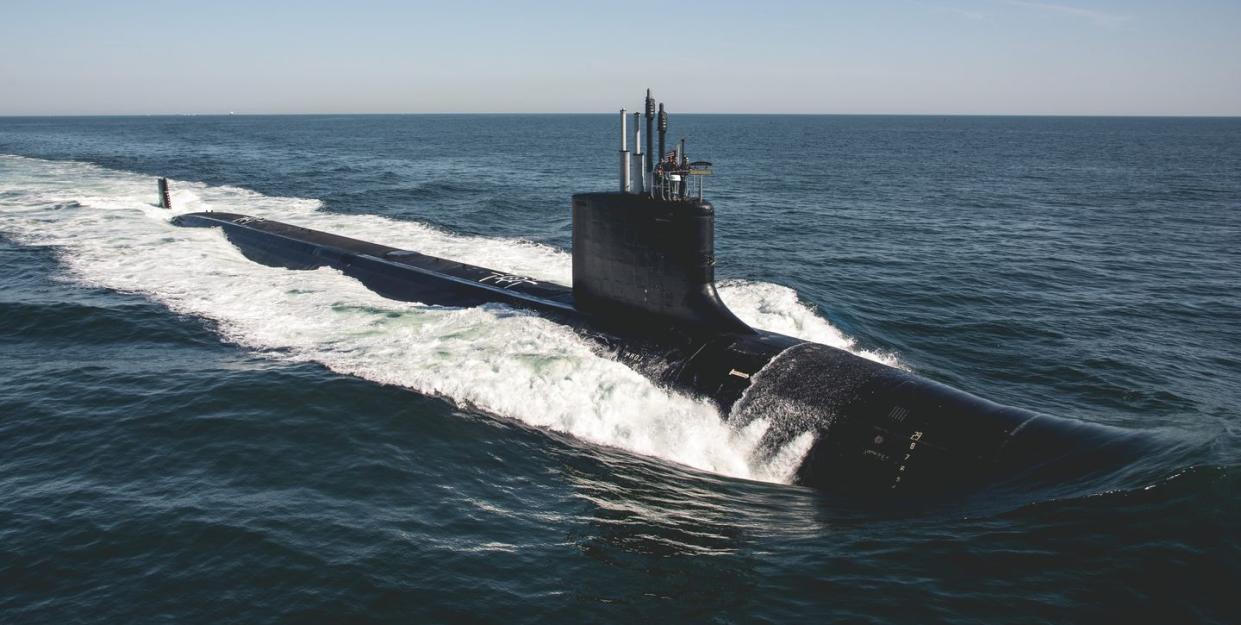
Laser weapons can strike at the speed of light, and they’re quickly deploying to every possible fighting domain, whether on land, in the air, and at sea. But what about under the sea?
Open-source budget documents, the earliest of which date back to 2011, show the Navy’s plans to arm Virginia-class nuclear subs with high-energy laser weapons. It’s a strange idea seeing as laser weapons definitely do not work underwater. Submarines are also quiet recluses by design, rarely popping their heads above water
But despite these glaring contradictions, experts talking to Popular Mechanics say a laser sub makes more sense than you might think.
Technical Challenges
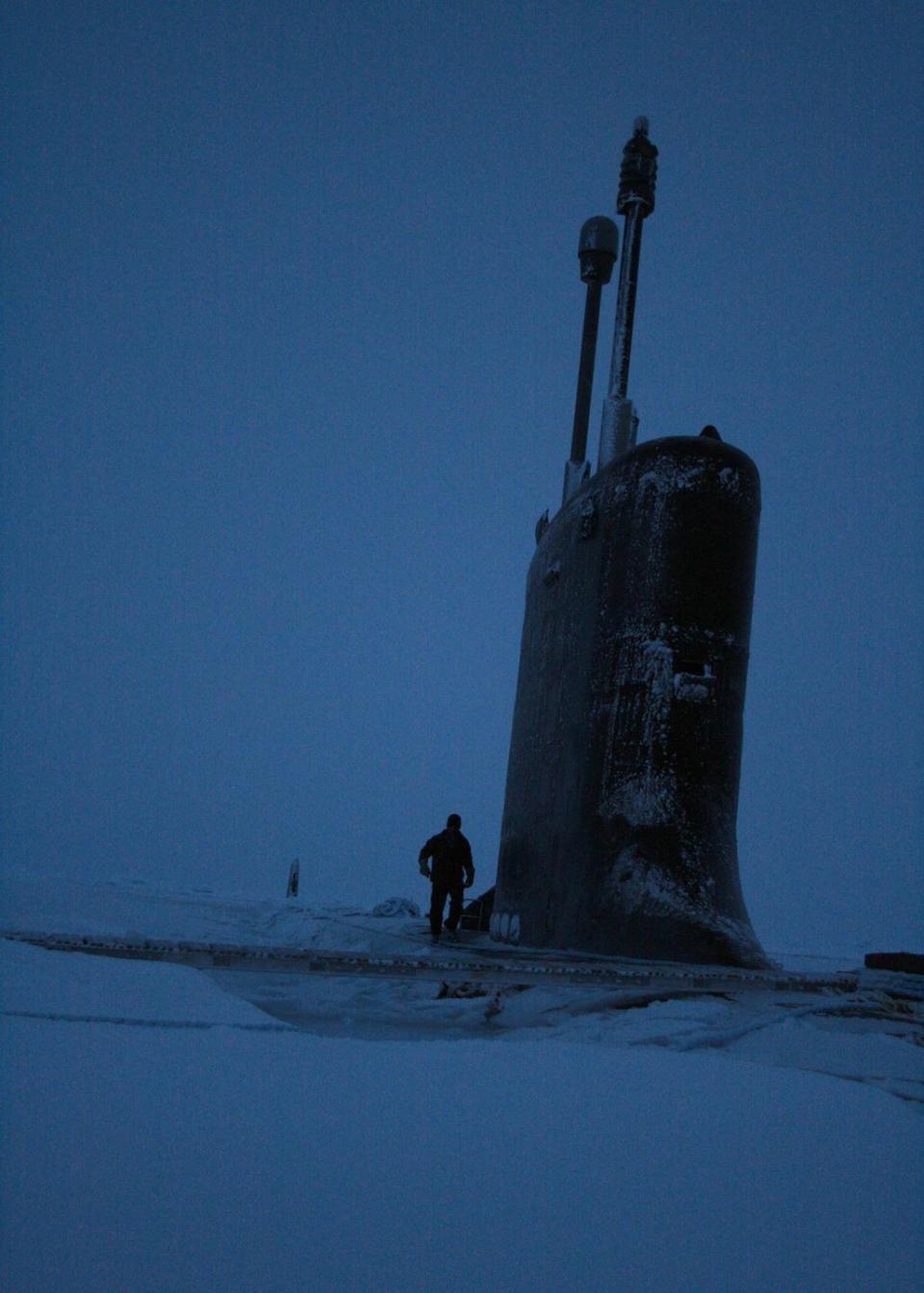
From the outset, a laser sub has one big problem to overcome—physics. When sunlight travels in water, solar rays dim the deeper you go—until you reach the complete darkness of the midnight zone at 1,000 meters. Much like sunlight, laser light also scatters and absorbs very quickly in water. It’s why underwater laser communications dissipate at a few hundred meters.
But from an engineering perspective, lasers would feel right at home on nuclear submarines—emphasis on nuclear.
“One of the major drawbacks of HELs [High Energy Lasers] is their energy requirement, something that is obviated if one places them on a nuclear-powered submarine, which generates enough power to operate them as well as everything else on board,” Sidharth Kaushal, Research Fellow in Sea Power at RUSI, told Popular Mechanics.
And the perfect candidate is the Virginia-class submarine. These subs, first floated in 2004, are nuclear-powered attack submarines armed with torpedoes and cruise missiles used to defend fleets and hit land targets. Virginia-class submarines also take on more shadowy roles, like intelligence gathering or ferrying covert special forces.
It’s likely that any laser system would have to attach to the Virginia’s photonics mast. Think of this mast as a 21st century periscope (though it extends telescopically rather than retracting into the hull). While surface ships have plenty of space for a laser system on deck, cramming one onto a smaller photonics mast is a lot harder.
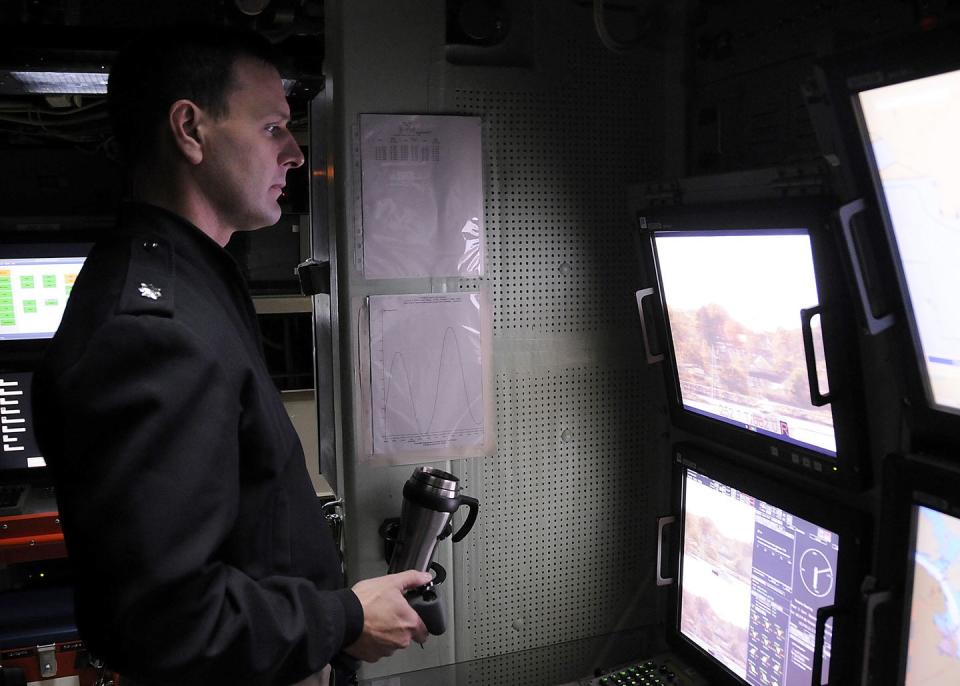
“Given the compact nature of the mast which already hosts key sensors, finding the space requires innovative designs,” says Kaushal.
While old-style periscopes were manually steered with handles and used a set of prisms to see the world above, a photonics mast has three cameras—one color, one high-resolution black-and-white, and one infrared—packed within a rotating housing along with a laser rangefinder. These are controlled with a joystick and fiber optic cables relay information to a commander’s console.
But this special attention paid to the photonics mast tells us one important thing—these lasers will almost certainly attack targets above sea level.
Anatomy of a Laser
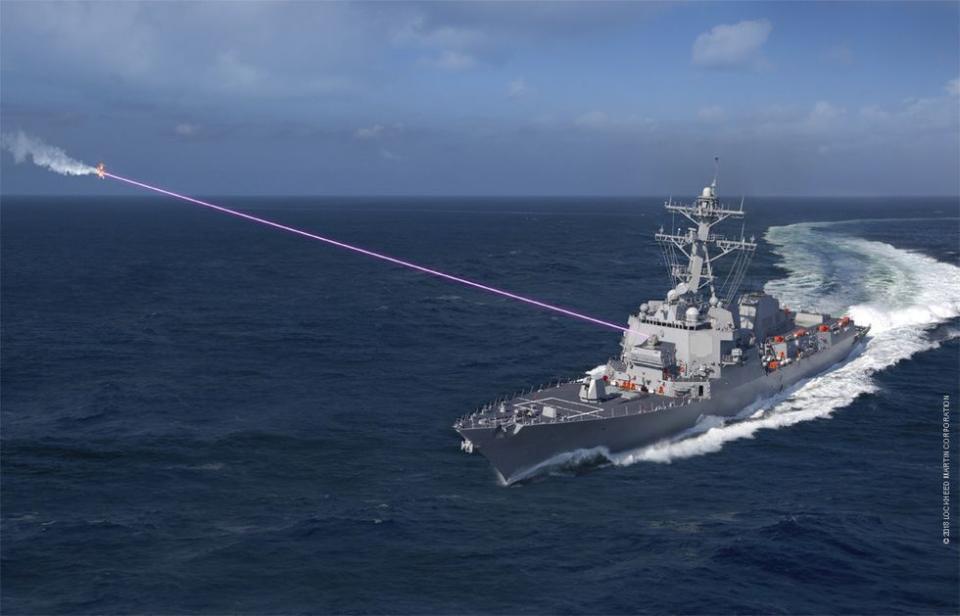
Apart from the mechanism producing the beam, any submarine laser weapon system needs two other things: a beam director and something to draw power from the nuclear reactor.
A beam director is an arrangement of lenses and mirrors that keeps the high-powered beam focused precisely on a distant target. Typically, the key element is an electronically controlled deformable mirror, which changes shape to keep the beam focused and compensate for atmospheric distortion. Luckily, the Navy’s been busy developing a miniature version of this tech for nearly a decade. In 2011, the Navy requested a prototype beam director for submarines, which was built and delivered by the Optical Physics Company.
Next is getting juice from the submarine’s nuclear engines to the laser itself. You can’t just punch a hole for high-power electric cables through the hull, seeing as its made from inch-and-a-half high-grade steel that’s built to withstand phenomenal pressure. This requires special ‘subsafe’ connections, which allow a hole to be made in the hull without compromising its strength.
A project to create these connections started in 2017 and should be ready for deployment in early 2020. A similar project, launched this year, will upgrade the power supply even further to support 200-kilowatt lasers—more powerful than any military laser ever fielded. But until these ‘subsafe’ connections are installed, any submarine laser tests will require a towed electrical generator.
While current plans call for using lasers built for surface ships, conditions change drastically when operating closer to the sea. So the Navy is also exploring a high-energy laser with a longer wavelength than existing systems. This longer wavelength scatters less, giving the laser a greater effective range. It would also be less detectable, meaning these lasers could be very useful during covert action.
Killer Application?
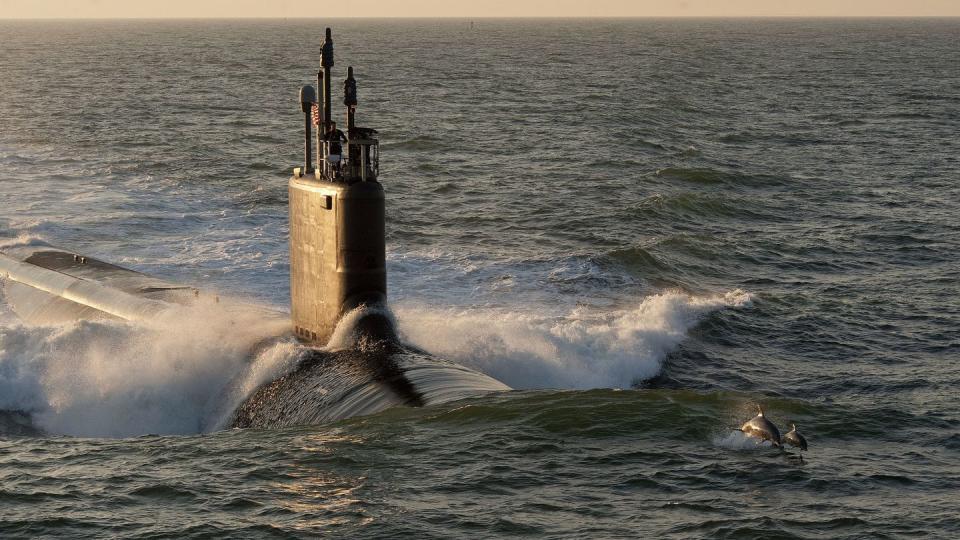
So while we know a good deal about how this laser works, what it’s for—and what types of targets it will attack—remains a mystery. And that's likely on purpose.
“We cannot comment on specific R&D efforts due to classification level,” Tim Pietrack of the Navy Office of Information told Popular Mechanics.
While the Navy remains tight lipped, the U.S. Naval Postgraduate School carried out a lengthy study called “Integration of a High Energy Laser into the Virginia Class Submarine,” and released a summary in 2015 but withheld any further details. The NPS also wouldn’t comment to Popular Mechanics.
Without much to go on, submarine experts outside the military have a few good guesses. For example, a sub-mounted laser would be a great antidote against anti-submarine aircraft.
“During the Cold War the British developed SLAM—Submarine-Launched surface to Air Missile system—which had short range missiles which popped up above the surface,” says HI Sutton, a submarine expert who runs the CovertShores website. “That was never adopted. More recently, there have been French proposals for a mast-mounted gun.”
Kaushal says that the U.S. Navy has previously praised high-energy lasers as the best solution for fending off enemy swarms and knocking down missiles at close range.
“High-energy lasers can disable the guidance systems on drones and ignite the fuel and munitions on small boats like the Iranian Boghammars,” says Kaushal. He notes that opponents using these tactics will likely lack advanced anti-submarine capability, so subs at periscope depth would be relatively safe.
But one of the biggest mysteries is the budget document’s mention of covert operations. U.S. submarines have plenty of experience in this area, and a weapon that is invisible and silent seems like a no-brainer. Theoretically, a sub could stealthily raise its mast and zap coastal targets, such as radar, communications, or even missile batteries, without anyone realizing what was happening. But there’s just one problem—submarines don’t like getting that close to the action.
“They [lasers] are line-of-sight weapons and periscopes are short, so they will be short-ranged,” says Sutton. “Submarine captains are likely to favor stand-off weapons such as cruise missiles whenever possible.”
So maybe it will be a pop-up fleet defender, appearing from nowhere to take out drone and boat swarms, or maybe it will be positioned to protect carrier groups from cruise missiles—or maybe it has some other secret mission which we cannot begin to guess.
Whatever the reason, these lasers won’t be fully operational for at least three years, based on planned upgrades for the Virginia-class photonics mast. Also high-energy weapons have had more than a few performance issues, and submarine lasers could fall victim to similar growing pains. For one, atmospheric turbulence at low levels may mean the periscope laser is not as effective as versions mounted higher up on ships. Sea spray and waves also become a bigger obstacle when a weapon is closer to the water’s surface.
But, judging from the amount of work invested over the past nine years, the U.S. Navy believes a laser-armed nuclear submarine will be useful—we'll have to wait and see if they're right.
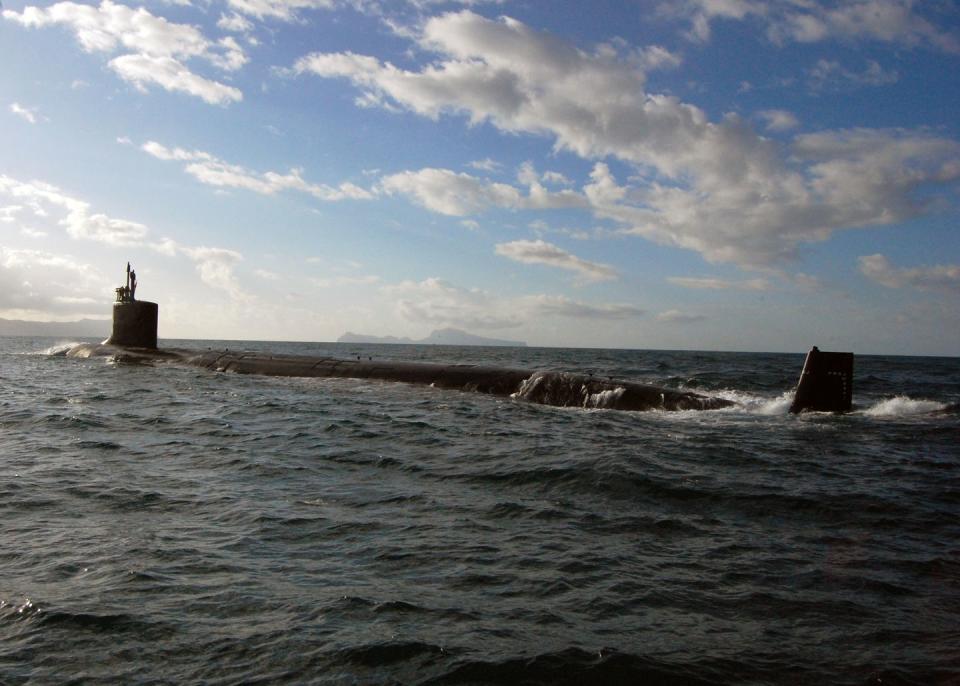
You Might Also Like

